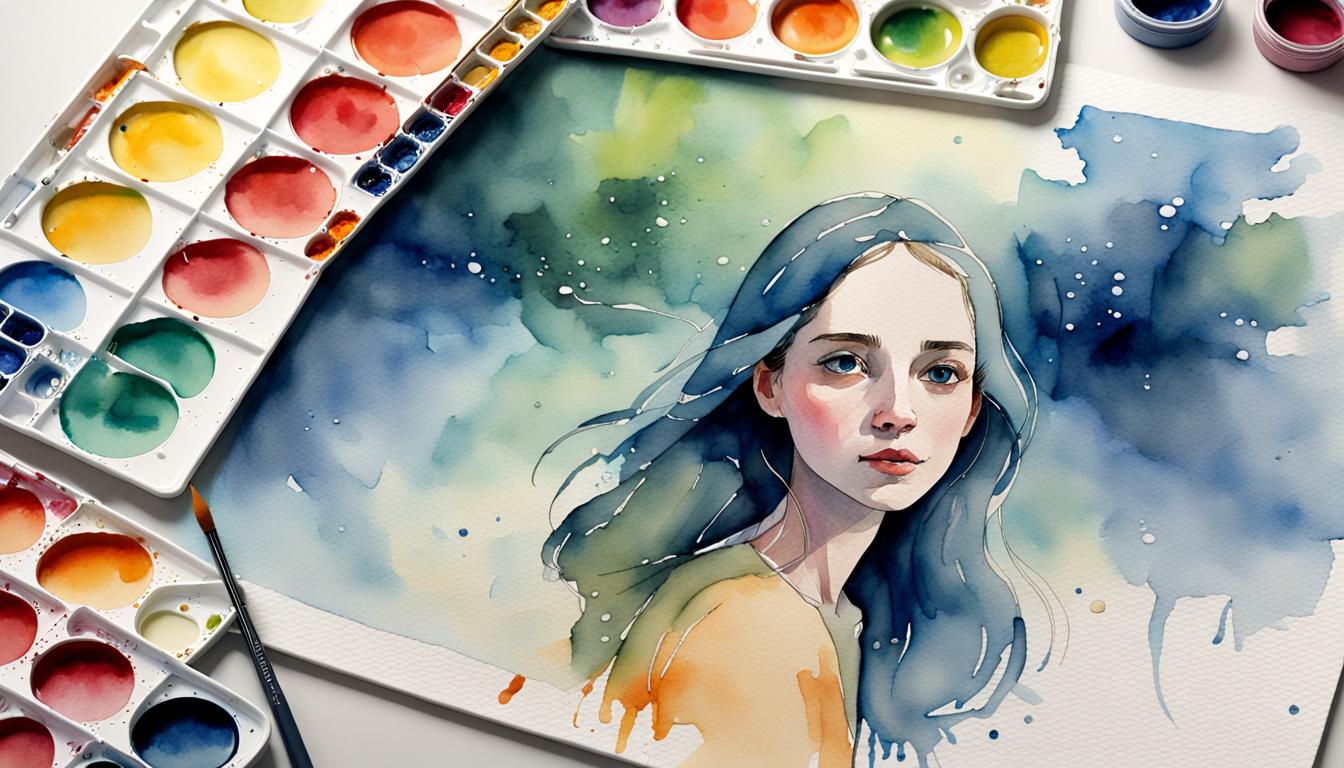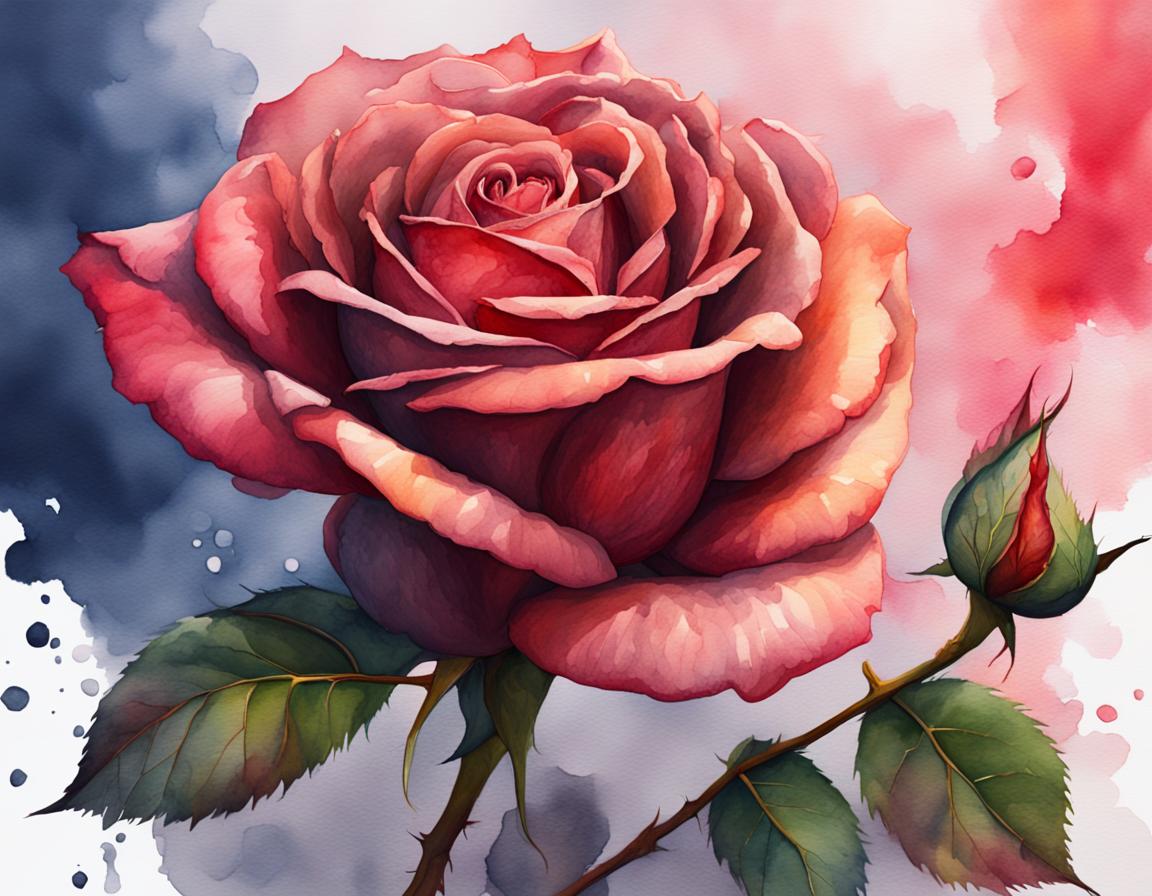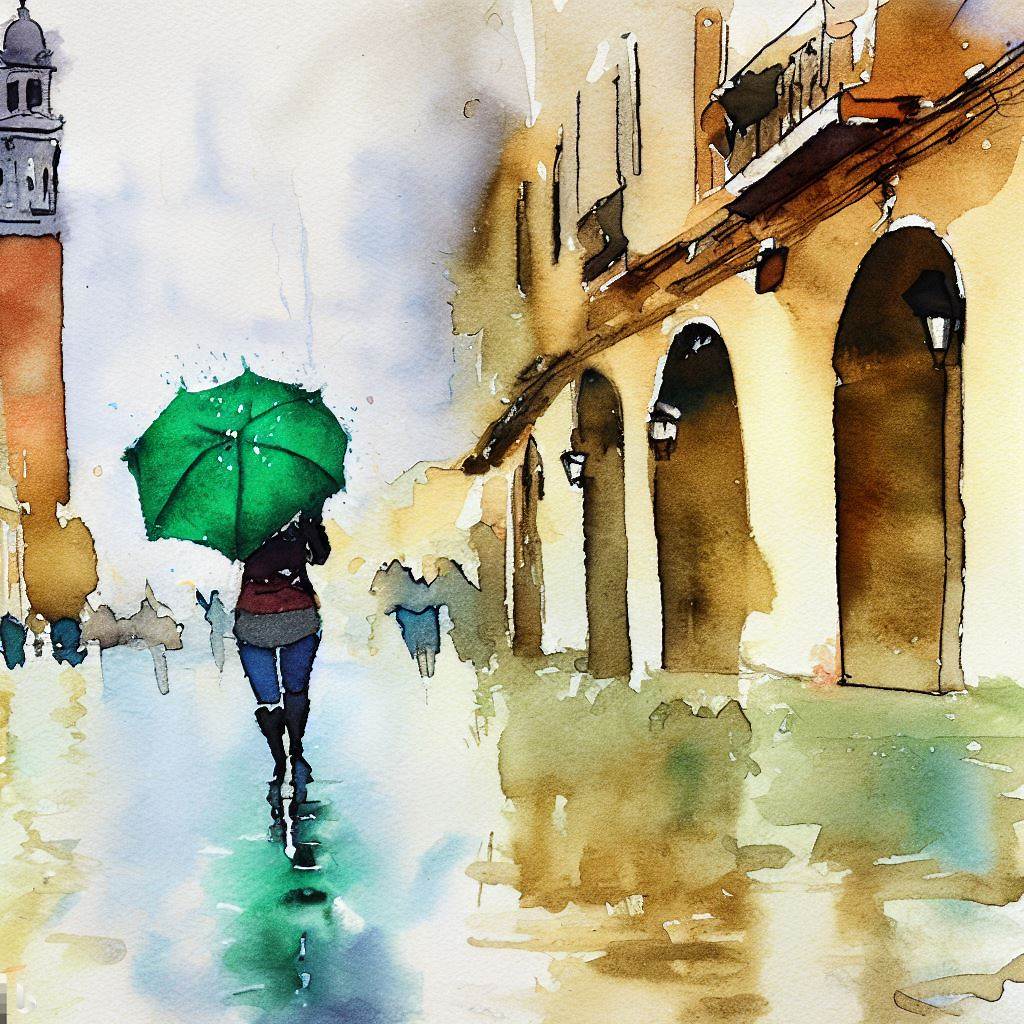Unlock the secrets to creating a harmonious watercolor composition with the art of balance and symmetry. Whether you’re a seasoned painter or just starting out, understanding these fundamental principles is crucial for achieving captivating and visually appealing artwork.
In this guide, we’ll delve into the art of balancing elements within your composition to create a sense of unity and harmony. From the placement of focal points to the distribution of colors and shapes, we’ll explore techniques that will elevate your watercolor paintings to new heights.
Discover how symmetrical compositions can bring a sense of order and tranquility to your artwork, while asymmetry can add a dynamic and intriguing touch. With a careful blend of technical know-how and artistic intuition, you’ll be able to create stunning watercolor compositions that captivate viewers and leave a lasting impression. Join us on this journey of mastering balance and symmetry in watercolor painting and unleashing your true artistic potential.
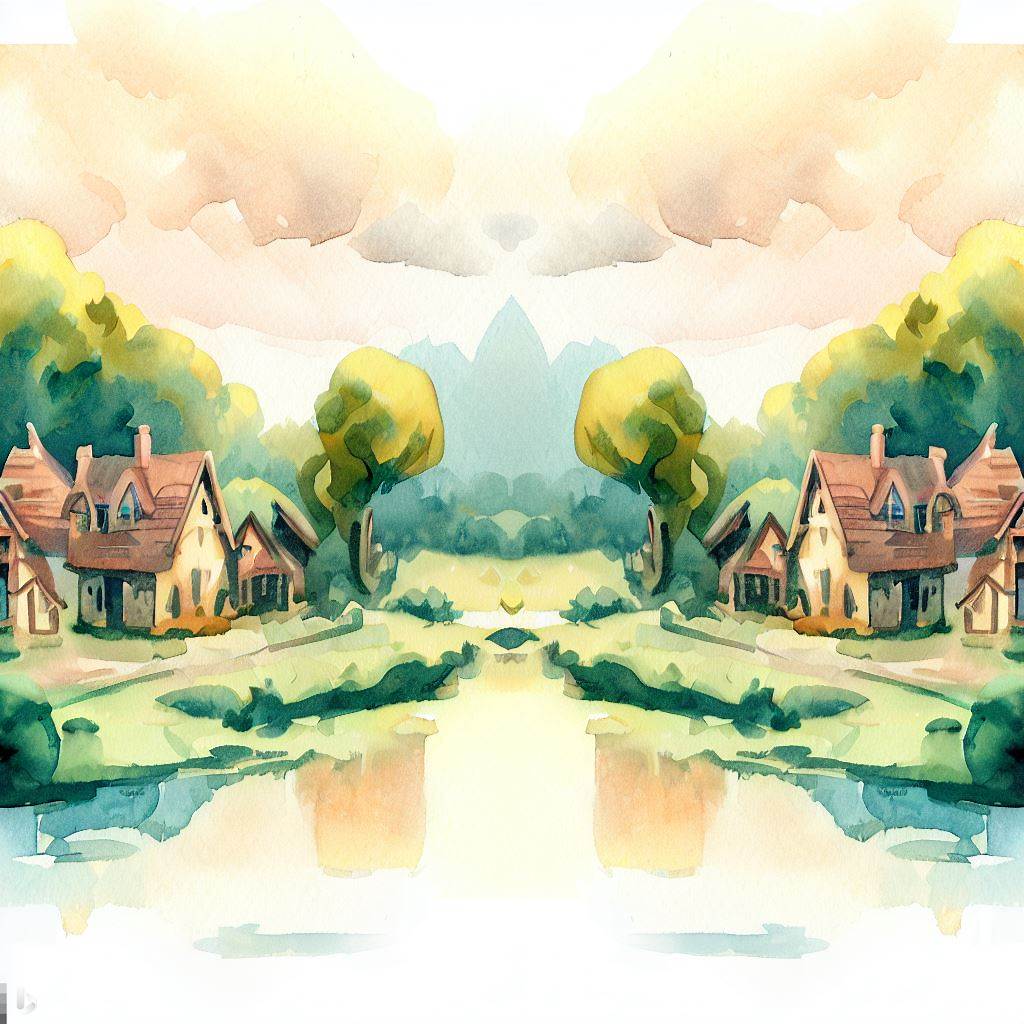
Understanding composition in watercolor painting
Watercolor painting is a versatile and expressive medium that allows artists to convey emotions and create stunning visual compositions. Composition refers to the arrangement of elements within a painting, such as lines, shapes, colors, and textures. It is the foundation upon which a successful artwork is built. Understanding composition is essential for creating a harmonious watercolor painting.
In watercolor painting, composition plays a vital role in capturing the viewer’s attention and guiding their gaze across the artwork. A well-composed painting can evoke certain moods, convey a story, or simply create a visually pleasing experience. By mastering the art of composition, you can effectively communicate your artistic vision and create a lasting impact on your audience.
To create a successful composition, it is important to consider the principles of balance and symmetry. These principles help establish a sense of order and unity within the artwork, making it visually appealing and engaging to the viewer. Let’s explore how balance and symmetry can be applied in watercolor compositions.
The importance of balance and symmetry in watercolor compositions
Balance and symmetry are fundamental principles of design that bring a sense of order and harmony to a painting. They help create a visual equilibrium and prevent the artwork from
appearing lopsided or chaotic. Understanding the importance of balance and symmetry in watercolor compositions is essential for creating visually pleasing and harmonious artworks.
Balance can be achieved in a watercolor composition through the distribution of visual weight. Visual weight refers to the perceived heaviness or lightness of elements within the painting. It is influenced by factors such as size, color intensity, and placement. Balancing visual weight ensures that no single element overpowers the others, creating a harmonious and pleasing composition.
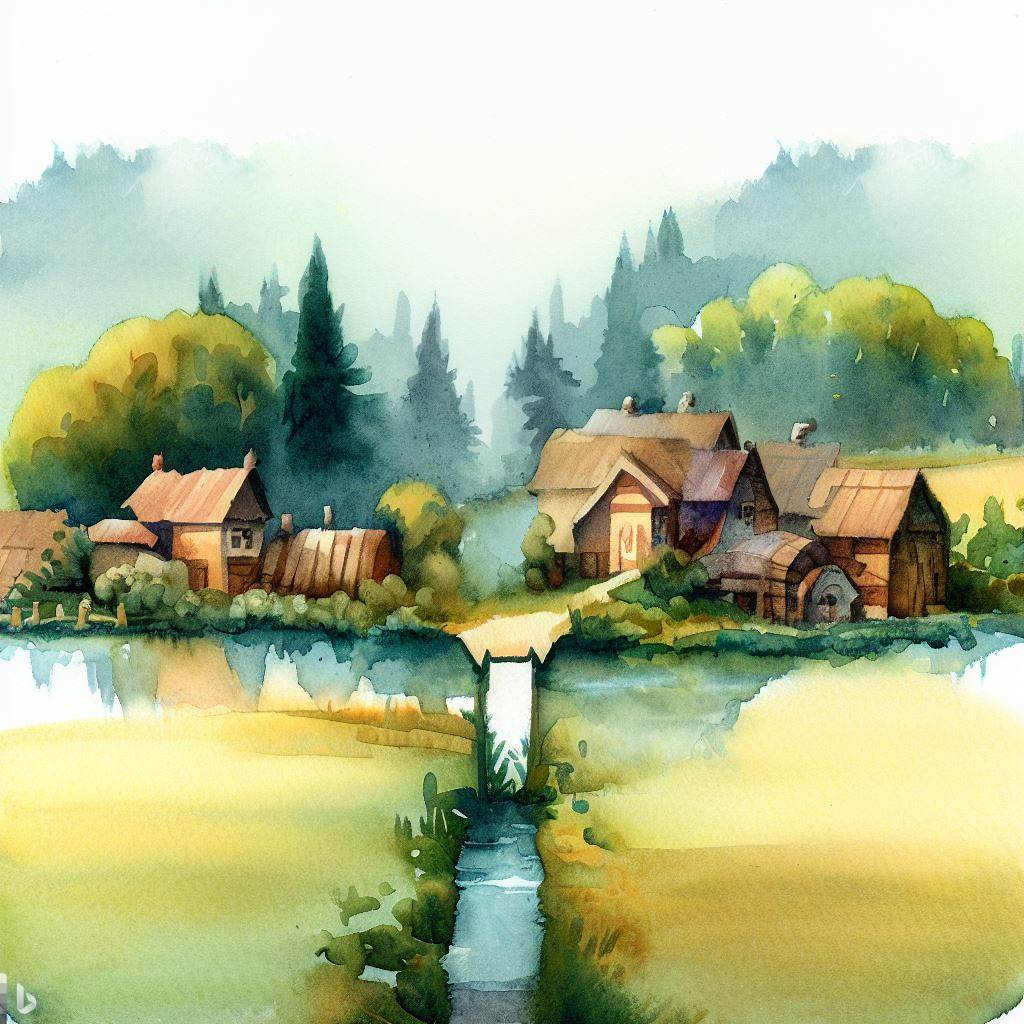
Symmetry, on the other hand, refers to the arrangement of elements in a mirror-like fashion. Symmetrical compositions create a sense of order and tranquility, as the viewer’s eye naturally follows the balanced arrangement of elements. However, it’s important to note that symmetry doesn’t necessarily mean an exact mirror image. It can also be achieved through approximate symmetry, where elements are slightly varied but still maintain a sense of balance.
Elements of Balance in watercolor painting
To achieve balance in a watercolor painting, it’s important to understand the elements that contribute to visual weight and how they can be strategically placed within the composition.
One element that influences visual weight is size. Larger elements tend to carry more visual weight compared to smaller ones. Placing a large element on one side of the composition can be balanced by a cluster of smaller elements on the opposite side. This creates a sense of equilibrium and prevents the artwork from feeling unbalanced.
Color intensity is another element that affects visual weight. Darker and more vibrant colors tend to carry more visual weight compared to lighter and less saturated ones. By strategically distributing colors of varying intensities throughout the composition, you can achieve a balanced and visually pleasing result.
Another element to consider is the placement of focal points. Focal points are areas within the composition that draw the viewer’s attention. Placing a focal point near the center of the composition can create a symmetrical balance while placing it off-center can create an asymmetrical balance. By strategically positioning focal points, you can guide the viewer’s gaze and create a sense of balance within the artwork.
Techniques for Achieving Balance in Watercolor Compositions
Achieving balance in a watercolor composition requires careful planning and consideration. Here are some techniques that can help you achieve balance and create visually appealing artwork:
1. **Rule of Thirds**: The rule of thirds is a popular composition technique that divides the canvas into a grid of nine equal parts. By placing key elements along the intersecting lines or at the points where the lines intersect, you can create a visually balanced composition.
2. **Negative Space**: Negative space refers to the empty areas surrounding the main subject. By utilizing negative space effectively, you can create a sense of balance and allow the main subject to stand out.
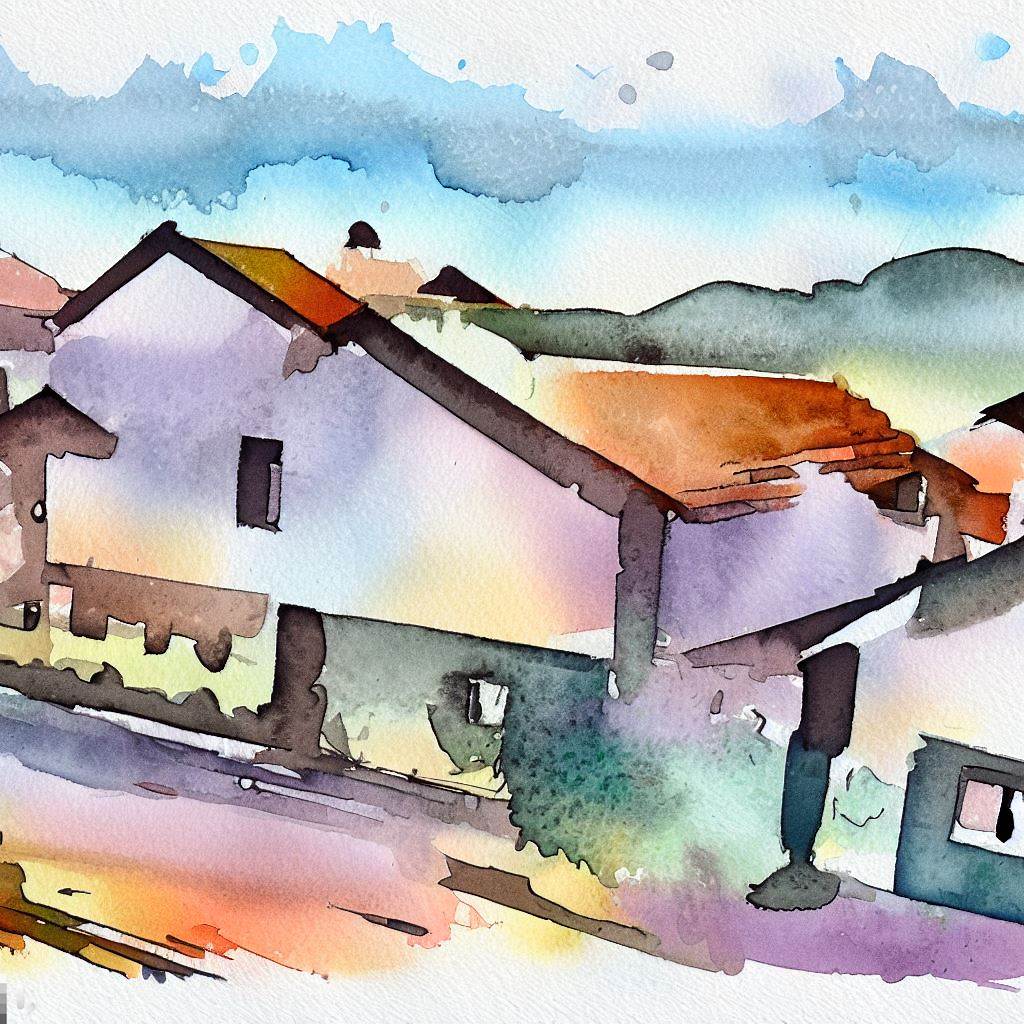
3. **Value Contrast**: Varying the light and dark values within the composition can help create a balanced distribution of visual weight. By strategically placing areas of high contrast, you can achieve a visually balanced result.
4. **Repetition and Rhythm**: Repetition of shapes, colors, or patterns can create a sense of unity and balance within the composition. By establishing a rhythm through repetition, you can guide the viewer’s eye and create a harmonious artwork.
5. **Hierarchy of Elements**: Establishing a clear hierarchy of elements within the composition can help create a sense of balance. By giving more visual weight to key elements and minimizing the visual weight of secondary elements, you can achieve a balanced and visually appealing composition.
By incorporating these techniques into your watercolor painting process, you can achieve a balanced and visually appealing composition that captivates viewers and leaves a lasting impression.
Exploring Symmetry in watercolor painting
Symmetry is an important aspect of composition that can bring a sense of order and tranquility to your watercolor paintings. By understanding different types of symmetry and how they can be applied, you can create harmonious compositions that are visually pleasing and engaging.

There are several types of symmetry that can be explored in watercolor painting:
1. **Vertical Symmetry**: Vertical symmetry occurs when elements on one side of the composition are mirrored on the other side. This creates a sense of balance and order, as the viewer’s eye naturally follows the mirrored arrangement of elements.

2. **Horizontal Symmetry**: Horizontal symmetry is similar to vertical symmetry, but the mirroring occurs along a horizontal axis. This type of symmetry can create a calming and serene effect, as the viewer’s eye follows the balanced arrangement of elements.
3. **Radial Symmetry**: Radial symmetry occurs when elements are arranged around a central point, like the spokes of a wheel. This type of symmetry can create a dynamic and visually intriguing composition.
4. **Bilateral Symmetry**: Bilateral symmetry refers to the mirroring of elements along a central vertical axis. This type of symmetry can create a sense of balance and order, as the viewer’s eye naturally follows the mirrored arrangement of elements.
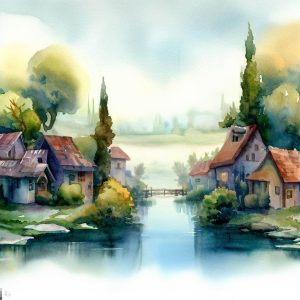
By exploring different types of symmetry in your watercolor compositions, you can create visually striking artworks that evoke a sense of order, tranquility, and intrigue.
Creating harmonious compositions through symmetrical elements
Symmetrical elements can be used to create harmonious compositions in watercolor painting. By strategically incorporating symmetrical elements, you can create a sense of balance and order within your artwork.
To create a harmonious composition using symmetrical elements, you can:
1. **Use symmetry as a focal point**: Placing a symmetrical element at the center of the composition can create a strong focal point that draws the viewer’s attention. This can create a visually balanced and harmonious composition.
2. **Create balance through repetition**: By repeating symmetrical elements throughout the composition, you can create a sense of unity and balance. This can help establish a harmonious and visually appealing artwork.
3. **Combine symmetry with asymmetry**: Combining symmetrical and asymmetrical elements can create a dynamic and visually interesting composition. By strategically placing asymmetrical elements within a symmetrical framework, you can create a sense of tension and intrigue.
4. **Experiment with different types of symmetry**: Explore different types of symmetry, such as vertical, horizontal, and radial symmetry, to create varied and visually captivating compositions. Each type of symmetry has its own unique visual impact and can be used to create different moods and effects.
By incorporating symmetrical elements into your watercolor compositions, you can create visually harmonious artworks that captivate viewers and evoke a sense of order and tranquility.
Using Color to Enhance Balance and Symmetry in watercolor paintings
Color plays a crucial role in watercolor painting and can be used to enhance balance and symmetry within a composition. By understanding the principles of color theory and how colors interact, you can effectively create visually balanced and harmonious artworks.
One way to enhance balance and symmetry through color is by using a limited color palette. Limiting your color choices can create a sense of unity and coherence within the composition. By using a limited color palette, you can ensure that the colors harmonize with each other and create a visually balanced result.
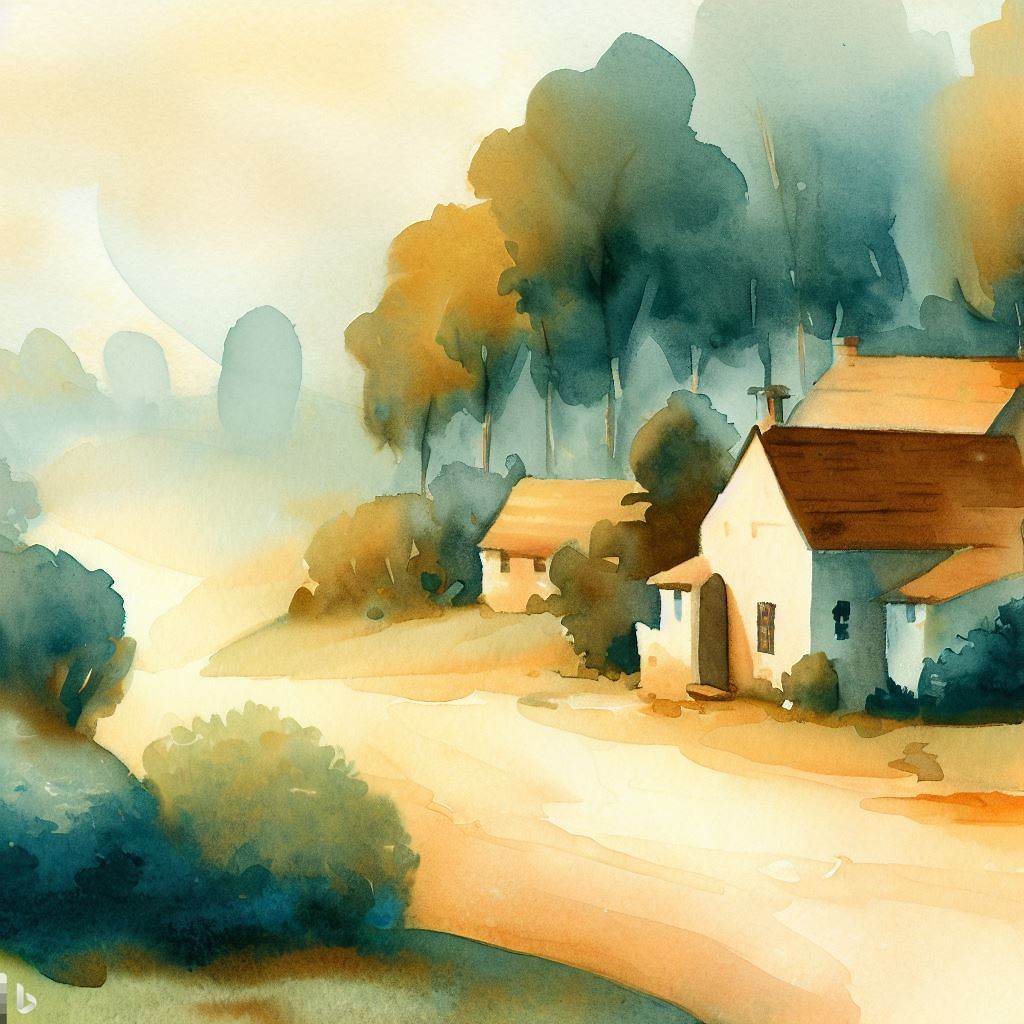
Another technique is to use complementary colors to create contrast and balance. Complementary colors are located opposite each other on the color wheel, such as red and green or blue and orange. By strategically incorporating complementary colors within the composition, you can create a visually balanced and harmonious effect.
Additionally, varying the saturation and intensity of colors can help create a balanced distribution of visual weight. Using more saturated colors in some areas and less saturated colors in others can create a sense of balance and prevent the artwork from appearing lopsided or chaotic.
By understanding how color interacts and experimenting with different color combinations, you can enhance balance and symmetry within your watercolor compositions, creating visually captivating artworks that leave a lasting impression.
Tips for achieving balance and symmetry in watercolor compositions
Achieving balance and symmetry in watercolor compositions requires practice and experimentation. Here are some tips to help you master these principles and create visually appealing artwork:
1. **Plan your composition**: Before starting a watercolor painting, take some time to plan your composition. Consider the placement of elements, focal points, and the overall balance of the artwork. Sketching out your composition beforehand can help you visualize how the elements will interact and ensure a balanced result.
2. **Experiment with different compositions**: Don’t be afraid to try different compositions and explore different types of balance and symmetry. By experimenting with different arrangements of elements, you can discover what works best for your artistic style and vision.
3. **Study the works of other artists**: Look for inspiration in the works of other watercolor artists. Study how they achieve balance and symmetry in their compositions and incorporate those techniques into your own artwork. By analyzing and learning from the works of others, you can further develop your skills and create more visually appealing compositions.
4. **Seek feedback**: Share your artwork with other artists or join a community of watercolor enthusiasts. Seeking feedback from others can provide valuable insights and help you identify areas for improvement. Constructive criticism can guide you in achieving better balance and symmetry in your compositions.
5. **Practice regularly**: Like any skill, achieving balance and symmetry in watercolor compositions requires practice. Set aside dedicated time for painting and keep experimenting with different techniques. The more you practice, the more you will understand how to achieve balance and symmetry in your artwork.
By following these tips and consistently practicing, you can improve your ability to achieve balance and symmetry in your watercolor compositions, creating visually captivating and harmonious artworks.
Examples of well-balanced and symmetrical watercolor paintings

To further understand the concepts of balance and symmetry in watercolor compositions, let’s take a look at some examples of well-balanced and symmetrical watercolor paintings:
1. **”Reflections”**: This watercolor painting features a symmetrical composition with a reflection of a tree in a calm lake. The symmetrical arrangement of the tree and its reflection creates a sense of tranquility and balance.
2. **”Bouquet of Flowers”**: In this artwork, a bouquet of flowers is positioned at the center of the composition, creating a symmetrical balance. The use of complementary colors and varying sizes of flowers enhances the overall balance and harmony.
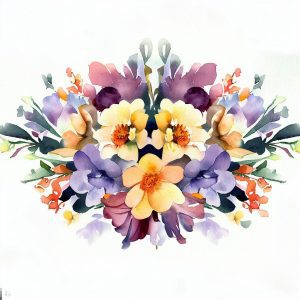

3. **”Sunset over the Mountains”**: This watercolor painting showcases a symmetrical composition with a sunset over a mountain range. The mirrored arrangement of the mountains and the reflection in the water creates a sense of balance and order.
These examples demonstrate how balance and symmetry can be effectively applied in watercolor compositions to create visually captivating and harmonious artworks. By studying and analyzing these examples, you can gain inspiration and insights into how to achieve balance and symmetry in your own watercolor paintings.
Conclusion: Mastering balance and symmetry in watercolor compositions
Mastering balance and symmetry are crucial for creating visually appealing and harmonious watercolor compositions. By understanding the principles of composition, elements of balance, and techniques for achieving symmetry, you can create artworks that captivate viewers and leave a lasting impression.
Balance and symmetry help establish a sense of order and unity within a watercolor painting, preventing the artwork from appearing lopsided or chaotic. By strategically distributing visual weight, utilizing symmetrical elements, and experimenting with color, you can create visually captivating and harmonious compositions.
Remember to plan your compositions, study the works of other artists, seek feedback, and practice regularly. By incorporating these tips into your artistic process, you can improve your ability to achieve balance and symmetry in your watercolor compositions.
Unlock the secrets of balance and symmetry in watercolor painting, and unleash your true artistic potential. With a careful blend of technical know-how and artistic intuition, you can create stunning watercolor compositions that captivate viewers and evoke a sense of harmony and tranquility. Embark on this journey of mastering balance and symmetry in watercolor painting, and elevate your artwork to new heights. Happy painting!
